Graphical Views of Intuitionistic Fuzzy Double-Controlled Metric-Like Spaces and Certain Fixed-Point Results with Application
Abstract
1. Introduction
2. Preliminaries
- 1.
- 2.
- is continuous;
- 3.
- 4.
- 5.
- Ifandwiththen
- 1.
- 2.
- is continuous;
- 3.
- 4.
- 5.
- Ifandwiththen
- (IFB1)
- (1FB2)
- (IFB3)
- (IFB4)
- (IFB5)
- (IFB6)is a non-decreasing function of;
- (IFB7)
- (IFB8)
- (IFB9)
- (IFB10)
- (IFB11)is a non-increasing function ofand
- thenis said to be IFBMS.
- (IFD1)
- (IFD2)
- (IFD3)
- (IFD4)
- (IFD5)
- (IFD6)is left continuous;
- (IFD7)
- (IFD8)
- (IFD9)
- (IFD10)
- (IFD11)is left continuous;
- thenis said to be IFDCMS.
3. Main Results
- (IFDL1)
- (IFDL2)
- (IFDL3)
- (IFDL4)
- (IFDL5)
- (IFDL6)is left continuous;
- (IFDL7)
- (IFDL8)
- (IFDL9)
- (IFDL10)
- (IFDL11)is left continuous;thenis said to be an IFDCMLS.
- (i)
- is said to be a convergent sequence if there existssuch that.
- (ii)
- is said to be a Cauchy sequence (CS) if for everythere existssuch thatexists and is finite.
- (iii)
- An IFDCMLSis said to be complete if every CS is convergent inthat is
4. Application to an Integral Equation
5. Conclusions
Author Contributions
Funding
Data Availability Statement
Conflicts of Interest
Abbreviations
| FSs | Fuzzy sets |
| FMSs | Fuzzy metric spaces |
| CTN | Continuous triangular norm |
| CTCN | Continuous triangular co-norm |
| IFMSs | Intuitionistic fuzzy metric spaces |
| MLSs | Metric-like spaces |
| CMLSs | Controlled metric-like spaces |
| FMLSs | Fuzzy metric-like spaces |
| IFDMSs | Intuitionistic fuzzy double-controlled metric spaces |
| IFDCMLSs | Intuitionistic fuzzy double-controlled metric-like spaces |
| FP | Fixed point |
| FDMSs | Fuzzy double-controlled metric spaces |
References
- Zadeh, L.A. Fuzzy sets. Inf. Control 1965, 8, 338–353. [Google Scholar] [CrossRef]
- Atanassov, K.T. Intuitionistic fuzzy sets. Fuzzy Sets Syst. 1986, 20, 87–96. [Google Scholar] [CrossRef]
- Schweizer, B.; Sklar, A. Statistical metric spaces. Pac. J. Math. 1960, 10, 314–334. [Google Scholar] [CrossRef]
- Kramosil, I.; Michlek, J. Fuzzy metric and statistical metric spaces. Kybernetika 1975, 11, 336–344. [Google Scholar]
- George, A.; Veeramani, P. On some results in fuzzy metric spaces. Fuzzy Sets Syst. 1994, 64, 395–399. [Google Scholar] [CrossRef]
- George, A.; Veeramani, P. On some results of analysis for fuzzy metric spaces. Fuzzy Sets Syst. 1997, 90, 365–368. [Google Scholar] [CrossRef]
- Grabiec, M. Fixed points in fuzzy metric spaces. Fuzzy Set Syst. 1988, 27, 385–389. [Google Scholar] [CrossRef]
- Harandi, A. Metric-like paces, partial metric spaces and fixed point. Fixed Point Theory Appl. 2012, 204. [Google Scholar] [CrossRef]
- Mlaiki, N. Controlled metric type spaces and the related contraction principle. Mathematics 2018, 6, 194. [Google Scholar] [CrossRef]
- Mlaiki, N.; Souayah, N.; Abdeljawad, T.; Aydi, H. A new extension to the controlled metric type spaces endowed with a graph. Adv. Differ. Equ. 2021, 94. [Google Scholar] [CrossRef]
- Shukla, S.; Abbas, M. Fixed point results in fuzzy metric-like spaces. Iran. J. Fuzzy Syst. 2014, 11, 81–92. [Google Scholar]
- Javed, K.; Uddin, F.; Aydi, H.; Arshad, M.; Ishtiaq, U.; Alsamir, H. On Fuzzy b-Metric-Like Spaces. J. Funct. Spaces 2021. [Google Scholar] [CrossRef]
- Park, J.H. Intuitionistic fuzzy metric spaces. Chaos Solitons Fractals 2004, 22, 1039–1046. [Google Scholar] [CrossRef]
- Konwar, N. Extension of fixed results in intuitionistic fuzzy b-metric spaces. J. Intell. Fuzzy Syst. 2020, 39, 7831–7841. [Google Scholar] [CrossRef]
- Shatanawi, W.; Gupta, V.; Kanwar, A. New results on modified intuitionistic generalized fuzzy metric spaces by employing E.A property and common E.A property for coupled maps. J. Intell. Fuzzy Syst. 2020, 38, 3003–3010. [Google Scholar] [CrossRef]
- Gupta, V.; Saini, R.K.; Kanwar, A. Some coupled fixed point results on modified intuitionistic fuzzy metric spaces and application to integral type contraction. Iran. J. Fuzzy Syst. 2017, 14, 123–137. [Google Scholar]
- Sezen, M.S. Controlled fuzzy metric spaces and some related fixed point results. Numer. Methods Partial. Differ. Equ. 2021, 37, 583–593. [Google Scholar] [CrossRef]
- Saleem, N.; Isik, H.; Furqan, S.; Park, C. Fuzzy double controlled metric spaces. J. Intell. Fuzzy Syst. 2021, 40, 9977–9985. [Google Scholar] [CrossRef]
- Itoh, S. Random fixed point theorems with an application to random differential equations in Banach spaces. J. Math. Anal. Appl. 1979, 67, 261–273. [Google Scholar] [CrossRef]
- Rafi, M.; Noorani, M.S.M. Fixed theorems on intuitionistic fuzzy metric space. Iran. J. Fuzzy Syst. 2006, 3, 23–29. [Google Scholar]
- Sintunavarat, W.; Kumam, P. Fixed Theorems for a Generalized Intuitionistic Fuzzy Contraction in Intuitionistic Fuzzy Metric Spaces. Thai J. Math. 2012, 10, 123–135. [Google Scholar]
- Alaca, C.; Turkoglu, D.; Yildiz, C. Fixed points in intuitionistic fuzzy metric spaces. Chaos Solitons Fractals 2006, 29, 1073–1078. [Google Scholar] [CrossRef]
- Mohamad, A. Fixed-point theorems in intuitionistic fuzzy metric spaces. Chaos Solitons Fractals 2007, 34, 1689–1695. [Google Scholar] [CrossRef]
- Dey, D.; Saha, M. An extension of Banach fixed point theorem in fuzzy metric space. Bol. Soc. Parana. Mat. 2014, 32, 299–304. [Google Scholar] [CrossRef]
- Farheen, M.; Ahmed, K.; Javed, K.; Parvaneh, V.; Ud Din, F.; Ishtiaq, U. Intuitionistic Fuzzy Double Controlled Metric Spaces and Related Results. Secur. Commun. Netw. 2022, 2022, 6254055. [Google Scholar] [CrossRef]
- Peng, F.; Wang, Y.; Xuan, H.; Nguyen, T.V. Efficient road traffic anti-collision warning system based on fuzzy nonlinear programming. Int. J. Syst. Assur. Eng. Manag. 2022, 13, 456–461. [Google Scholar] [CrossRef]
- Nguyen, T.V.; Huynh, N.T.; Vu, N.C.; Kieu, V.N.; Huang, S.C. Optimizing compliant gripper mechanism design by employing an effective bi-algorithm: Fuzzy logic and ANFIS. Microsyst. Technol. 2021, 27, 3389–3412. [Google Scholar] [CrossRef]
- Wang, C.N.; Yang, F.C.; Nguyen, V.T.T.; Vo, N.T. CFD Analysis and Optimum Design for a Centrifugal Pump Using an Effectively Artificial Intelligent Algorithm. Micromachines 2022, 13, 1208. [Google Scholar] [CrossRef]
- Uddin, F.; Ishtiaq, U.; Hussain, A.; Javed, K.; Al Sulami, H.; Ahmed, K. Neutrosophic Double Controlled Metric Spaces and Related Results with Application. Fractal Fract. 2022, 6, 318. [Google Scholar] [CrossRef]
- Mustafa, Z.; Parvaneh, V.; Abbas, M.; Roshan, J.R. Some coincidence point results for generalized (ψ,φ)-weakly contractive mappings in ordered G-metric spaces. Fixed Point Theory Appl. 2013, 326. [Google Scholar] [CrossRef]

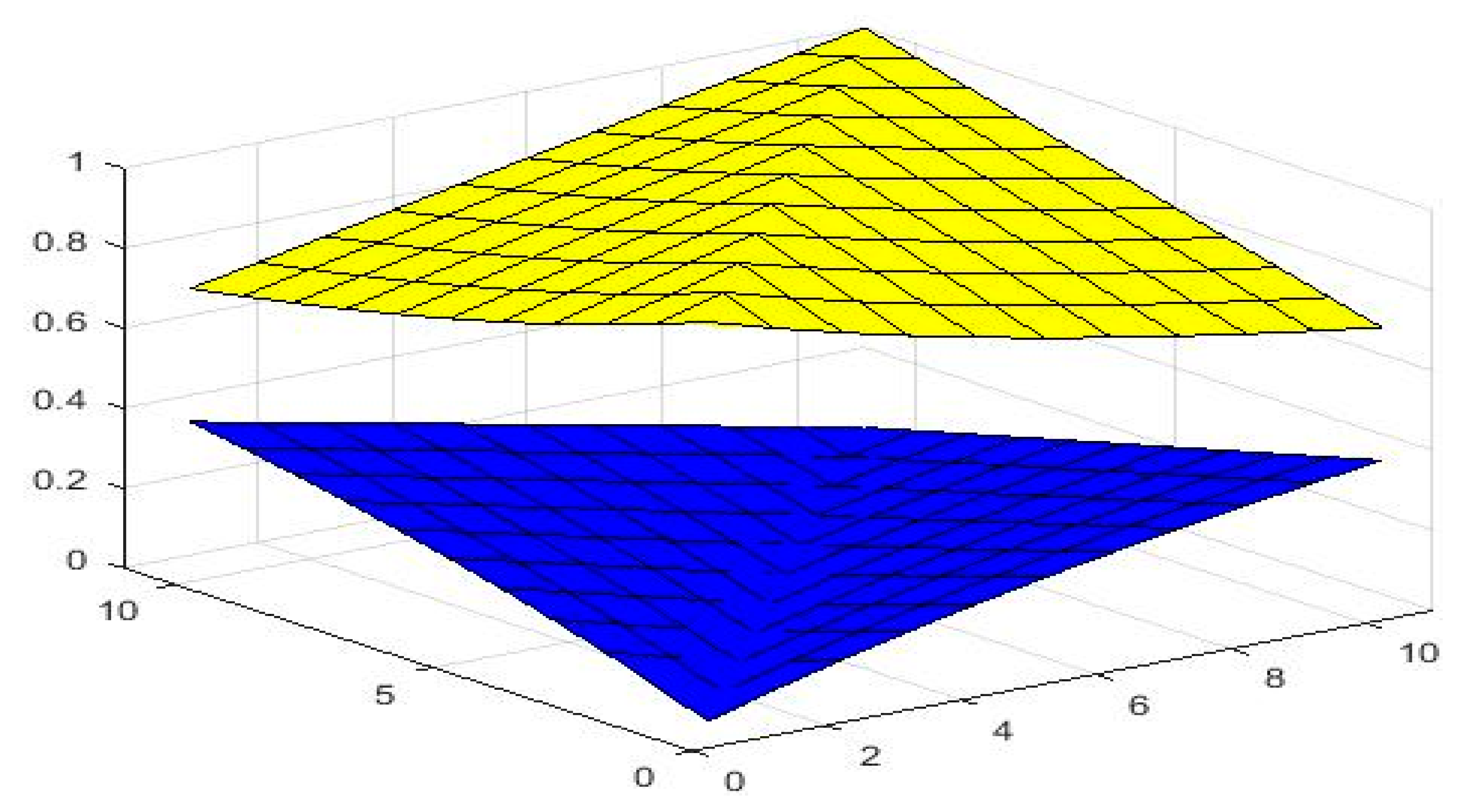
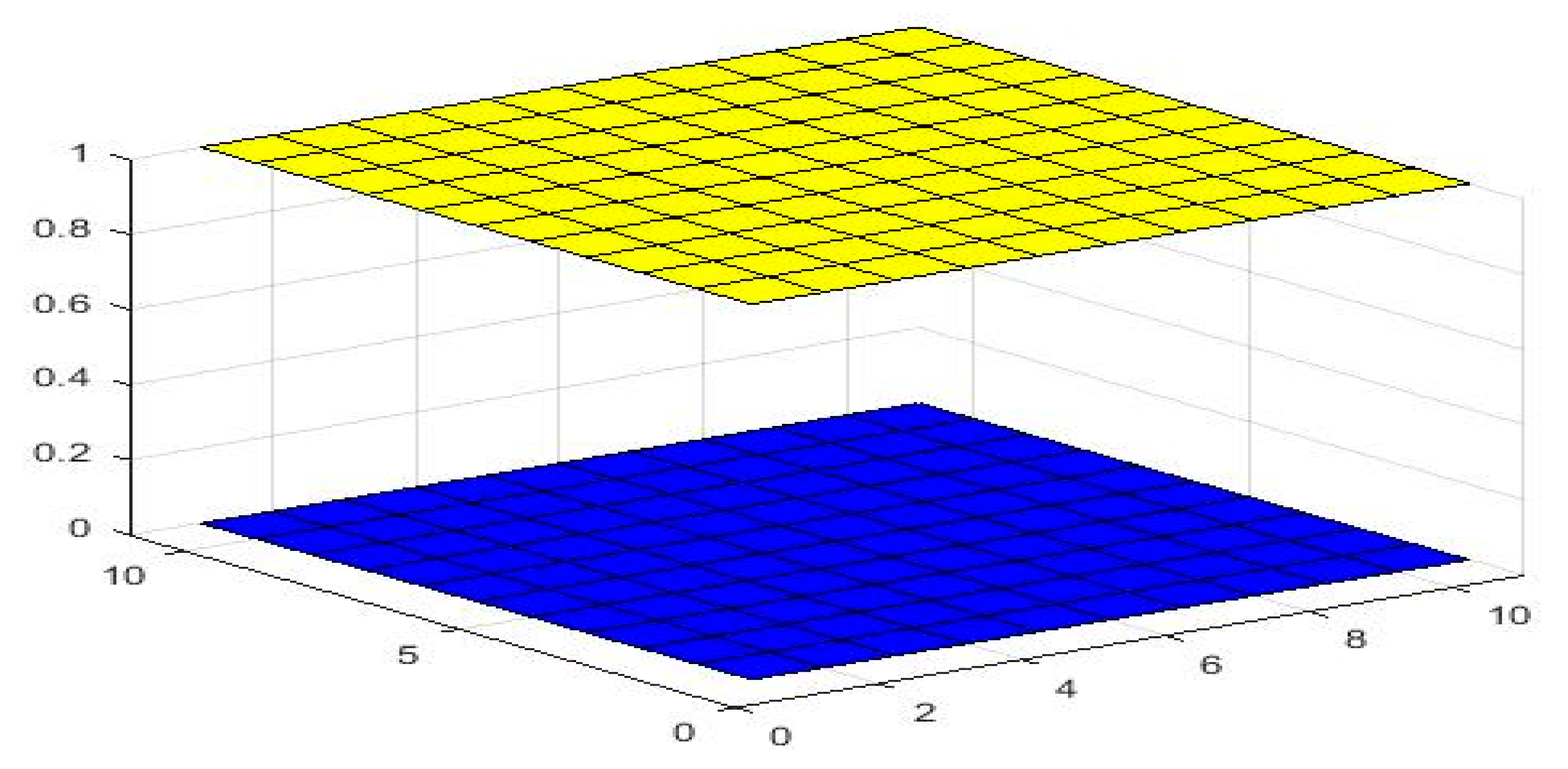
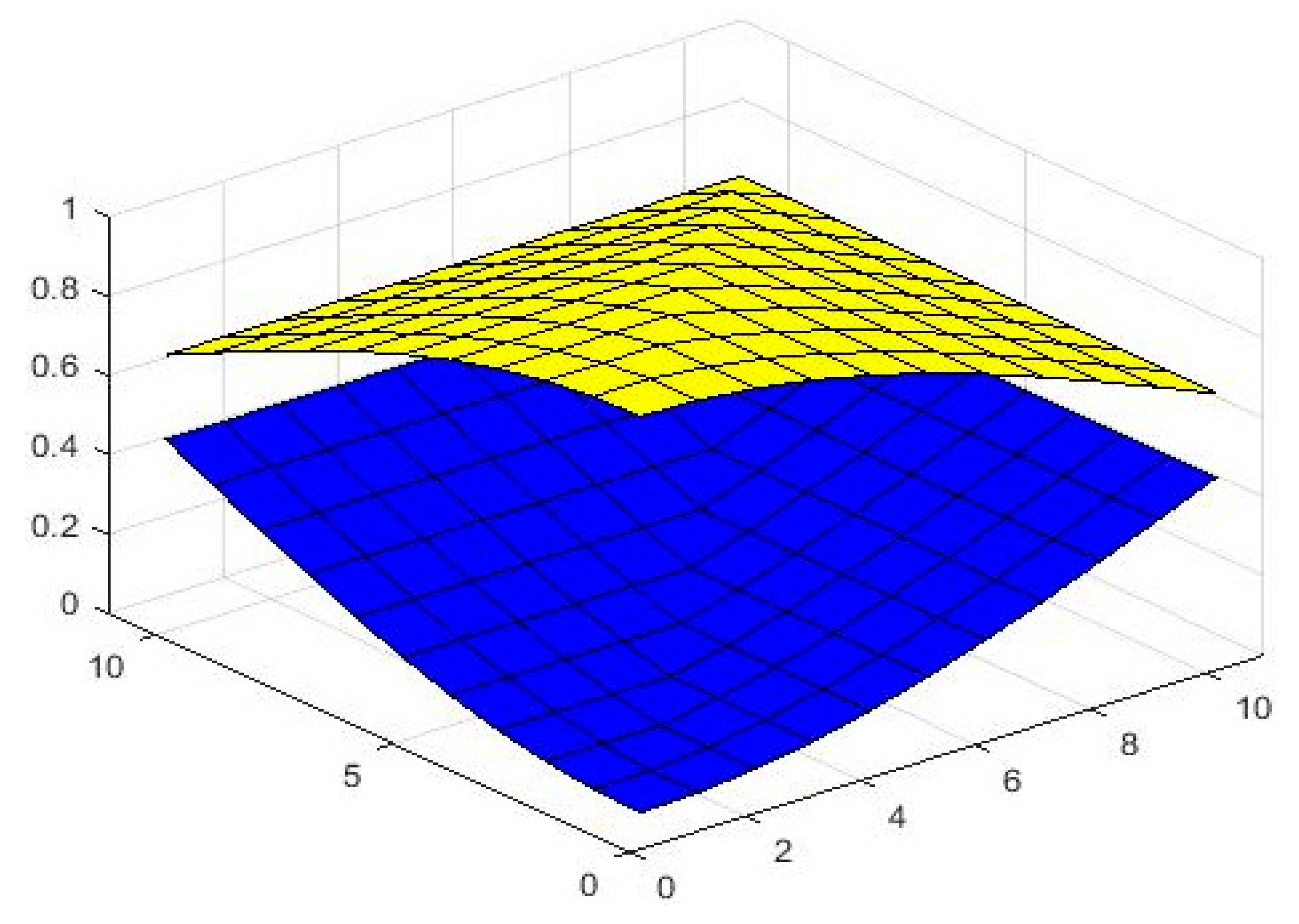
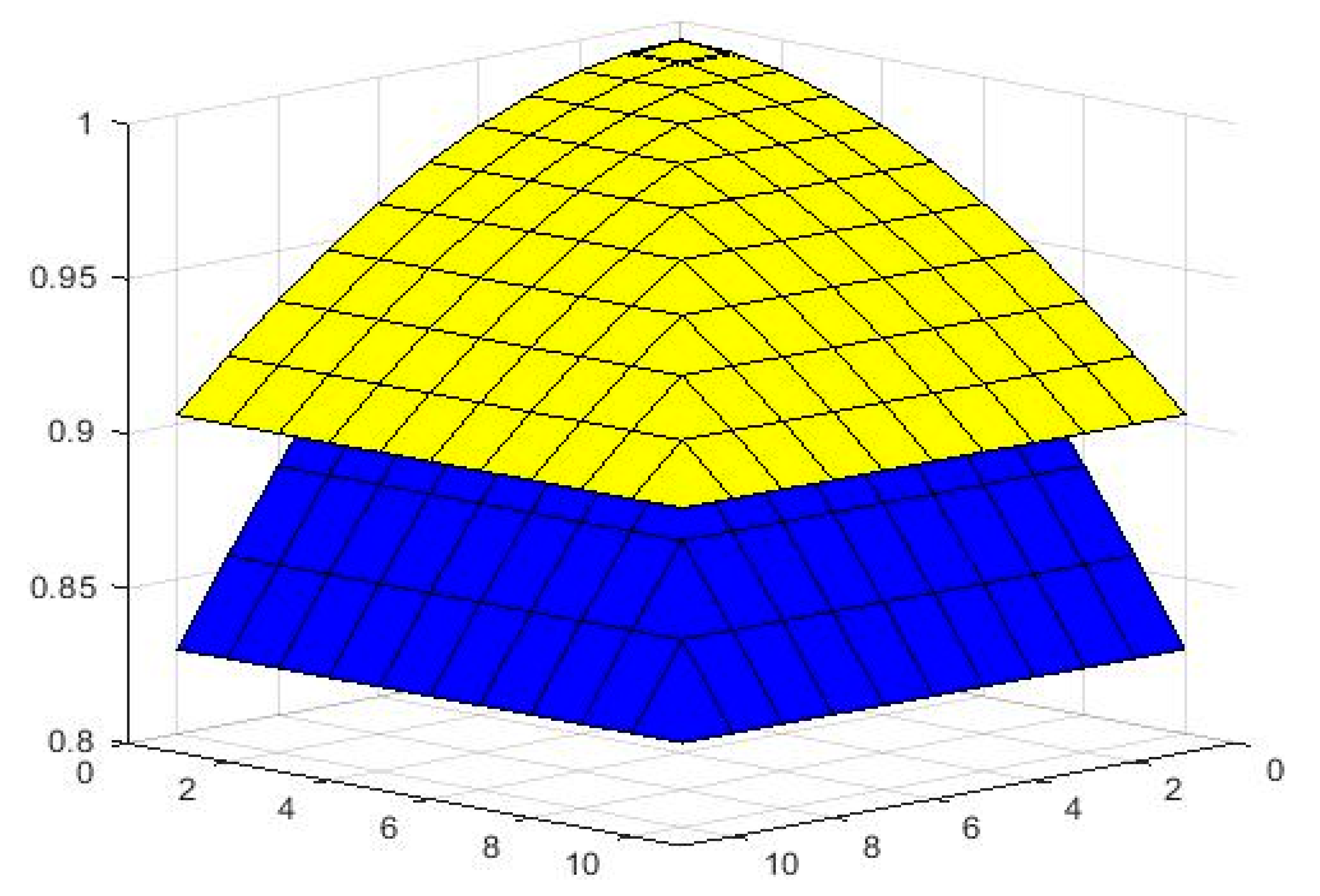
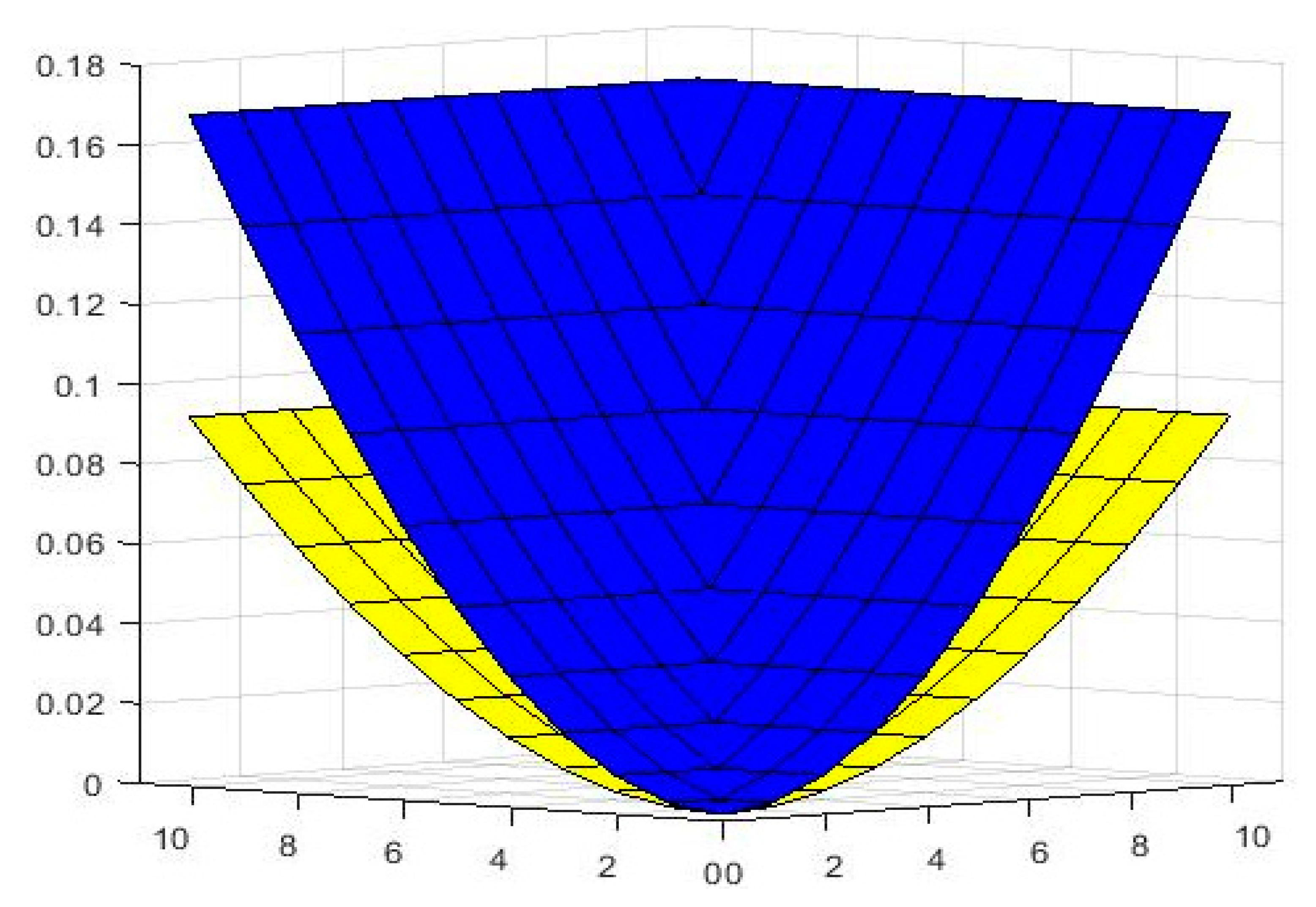
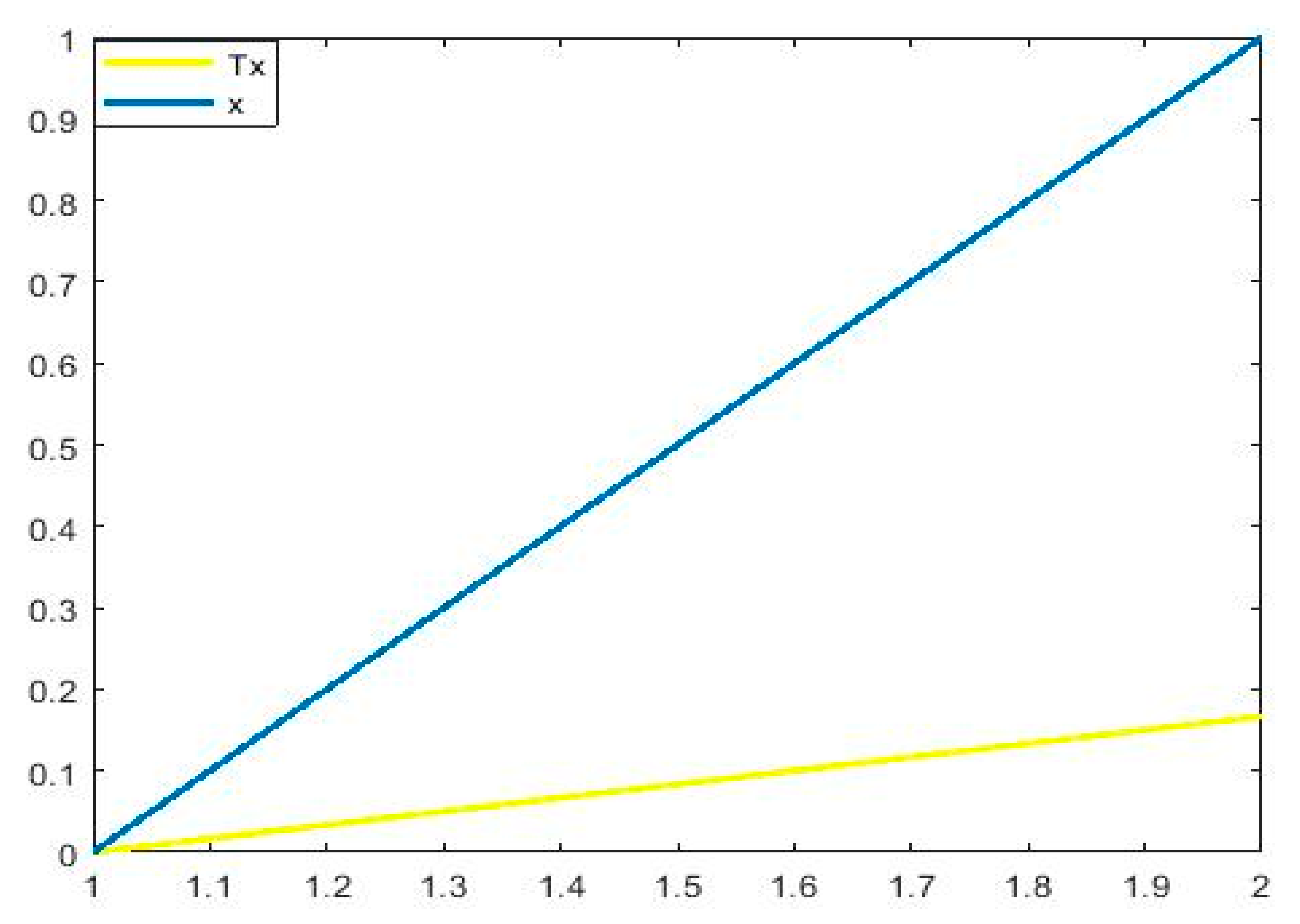
Publisher’s Note: MDPI stays neutral with regard to jurisdictional claims in published maps and institutional affiliations. |
© 2022 by the authors. Licensee MDPI, Basel, Switzerland. This article is an open access article distributed under the terms and conditions of the Creative Commons Attribution (CC BY) license (https://creativecommons.org/licenses/by/4.0/).
Share and Cite
Ishtiaq, U.; Saleem, N.; Uddin, F.; Sessa, S.; Ahmad, K.; di Martino, F. Graphical Views of Intuitionistic Fuzzy Double-Controlled Metric-Like Spaces and Certain Fixed-Point Results with Application. Symmetry 2022, 14, 2364. https://doi.org/10.3390/sym14112364
Ishtiaq U, Saleem N, Uddin F, Sessa S, Ahmad K, di Martino F. Graphical Views of Intuitionistic Fuzzy Double-Controlled Metric-Like Spaces and Certain Fixed-Point Results with Application. Symmetry. 2022; 14(11):2364. https://doi.org/10.3390/sym14112364
Chicago/Turabian StyleIshtiaq, Umar, Naeem Saleem, Fahim Uddin, Salvatore Sessa, Khaleel Ahmad, and Ferdinando di Martino. 2022. "Graphical Views of Intuitionistic Fuzzy Double-Controlled Metric-Like Spaces and Certain Fixed-Point Results with Application" Symmetry 14, no. 11: 2364. https://doi.org/10.3390/sym14112364
APA StyleIshtiaq, U., Saleem, N., Uddin, F., Sessa, S., Ahmad, K., & di Martino, F. (2022). Graphical Views of Intuitionistic Fuzzy Double-Controlled Metric-Like Spaces and Certain Fixed-Point Results with Application. Symmetry, 14(11), 2364. https://doi.org/10.3390/sym14112364







